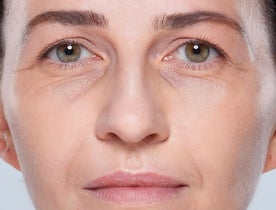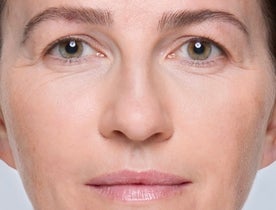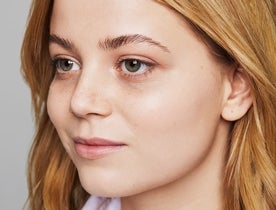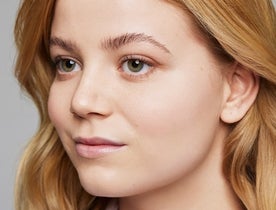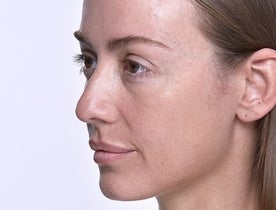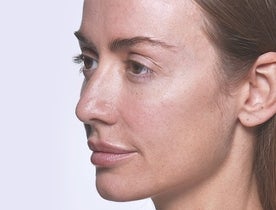Talk to a licensed healthcare practitioner about aesthetic
treatments for under eye hollows.


UNDER-EYE FILLERS
Dark circles or hollows under the eyes are a common facial concern, regardless of gender or age.1,2 The hollows make many of us feel we look tired or older than we are.1 Under-eye fillers from Restylane® are used to treat the tired-looking eye area to make us look less fatigued.3,4
What are under-eye fillers from Restylane®?
Dark circles under the eyes can be caused by many things but it’s often a lack of volume that makes us look tired.3,4 Under-eye fillers from Restylane® are hyaluronic acid based dermal fillers that are used to correct volume loss, to reduce the hollows and signs of fatigue.3,4 Restylane® provides fillers with precise firmness for this treatment.3-7
Types of under eye fillers

Restylane® EYELIGHT™
FOR A RESTED, REFRESHED LOOK
Are you tired of looking tired? Brighten up your look with Restylane® EYELIGHT™, an under-eye filler that treats volume loss and reduces hollows in the under-eye area.3,4 Restylane® EYELIGHT™ provides natural-looking results3* with a filler gel well-suited for the delicate tear trough.3,4,8
Restylane® EYELIGHT™ is ideal for the tear trough as it has less water uptake compared to many other fillers, reducing the risk of swelling.9,10,11

would recommend Restylane® EYELIGHT™ to a friend3*
said Restylane® EYELIGHT™ improved their under-eye hollows3*†

Restylane®
FOR SUPPORTING THE UNDER-EYE AREA
Feel like yourself again with a trusted filler. Restylane® is the first approved non-animal hyaluronic acid dermal filler in the EU, backed by more than 27 years of real-world experience.**12,13,14 The filler gel has a composition that is very close to the natural hyaluronic acid that you have in your skin.15,16
Restylane® is a versatile dermal filler that supports you where you need it.12,13,16

would repeat their treatment17
reported aesthetic improvements18


Frequently asked questions
How long do under-eye fillers last?
Your body will gradually break down the under-eye filler, exactly how fast differs from person to person. Restylane® EYELIGHT™ is a durable filler that lasts up to 18 months.3
Will under-eye fillers hurt?
Some people may experience mild discomfort, but the treatment only takes a few minutes. Most Restylane® fillers contain a local anesthetic, lidocaine, for a more comfortable treatment experience.8,12 You and your healthcare practitioner may also decide whether to use additional pain relief.
Are there under-eye fillers side effects?
Side effects are normally mild and usually disappear within a week.8,12 Remember to discuss all potential side effects with your healthcare practitioner before the treatment. The tear trough is a delicate area and it’s important to consult a qualified healthcare practitioner for this treatment.
Under-eye fillers aftercare - what should I do?
After treatment, you will receive specific instructions from your healthcare practitioner. Generally, the treatment requires no downtime, so you can go back to your daily activities right after.
A general advice is to keep the area clean, free of makeup and avoid touching or massaging the treated area. After your treatment, avoid exposing the treated area to heat (sunbathing, saunas, steam baths, etc) until any signs of local inflammation have disappeared. Make sure to follow the instructions that you receive.
* At 18 months after optimal treatment. Patients received an optional retreatment after 12 months.3
** Restylane® injectable gel was first approved for marketing and sale in September 1996 in the EU.8,10
† Patients at least improved according to subject GAIS.3
1. Somji M.J. Aesthet Nurs. 2022:11(9):396–402. 2. Galderma. Data on file. MA-46075. Restylane Eyelight European Market Survey 2020. 3. Galderma. Data on file. MA-57627. 43USTT1904
Medical Deck. 4. Nikolis A et al. J Drugs Dermatol. 2022;21(4):387–92. 5. Galderma DOF. MA-56724 X-strain and G' including Shaype. 6. Nikolis A, et al. J Drugs Dermatol. 2024;23(4):255–
61. 7. Öhrlund Å, et al. J Drugs Dermatol. 2024;23(1):1332–6. 8. Restylane® EYELIGHT™ IFU (EU). 9. Öhrlund A. Water uptake of hyaluronic acid fillers. Poster IMCAS 2022. 10. de la Guardia
C et al. Facial Plast Surg 2022;38:116–23. 11. Kablik J, et al. Dermatol Surg. 2009;35:302–12. 12. Restylane® IFU (EU). 13. Lundgren B et al. J Drugs Dermatol. 2018;17:982–6. 14. Galderma.
Data on file. MA-39680. Global 55 million Restylane treatments, update 2022. 15. Seo K. Volumizing Fillers. In: Facial Volumization with Fillers. Springer, Singapore. 2021;29–83.
16. Edsman K et al. Dermatol Surg. 2012;38:1170–9. 17. Huang SH et al. J Drugs Dermatol. 2020;19:836–42. 18. Weiss R et al. Dermatol Surg. 2010;36:750–9.
Always consult a healthcare professional for individualized treatment recommendations and to discuss important safety information and risks associated with the use of the products.


